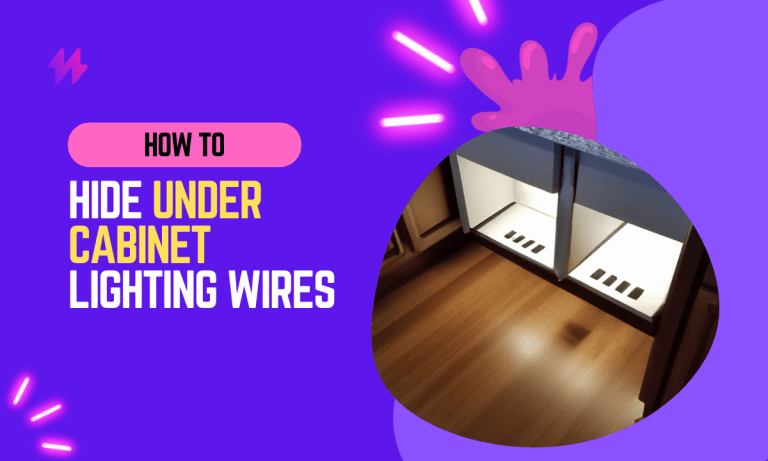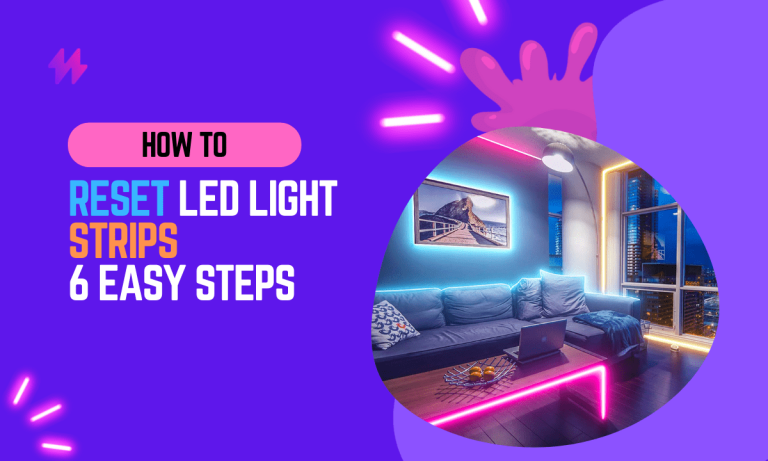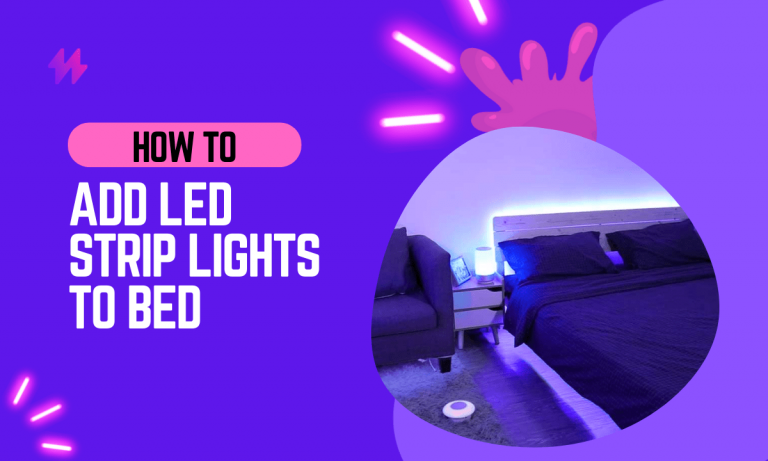Do LED Strip Lights Use a Lot of Electricity?
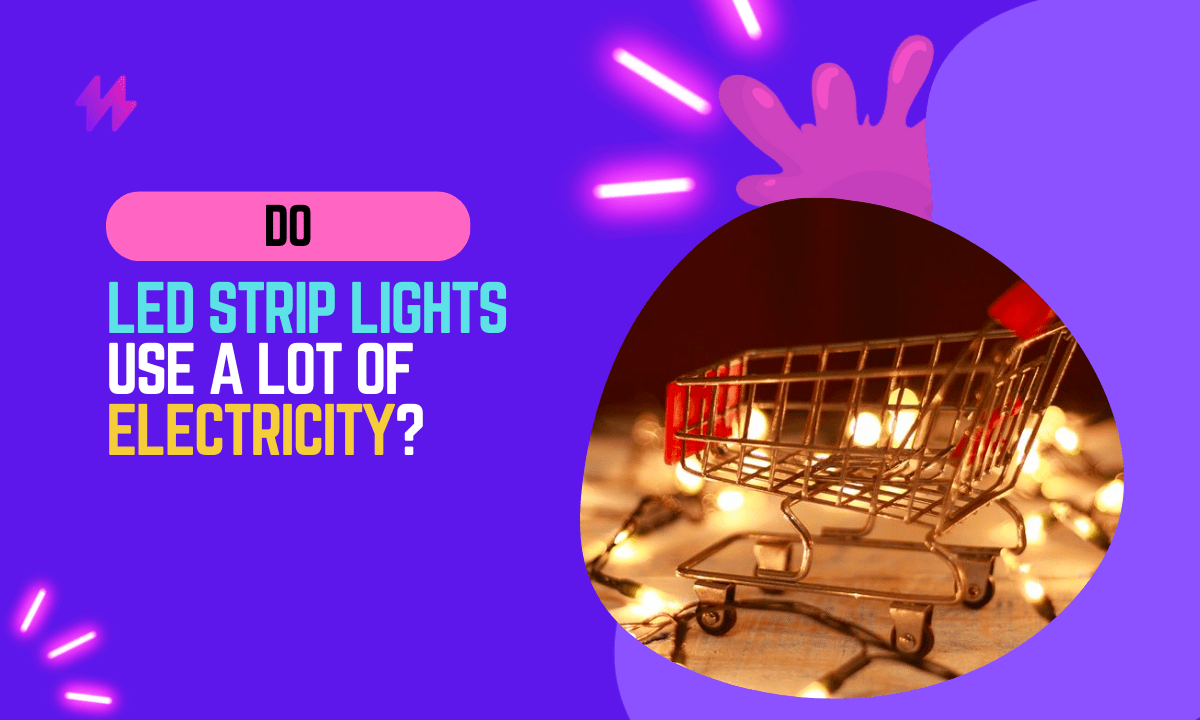
In today’s world, energy efficiency has become a paramount concern in various aspects of our lives, including the lighting solutions we use. As traditional lighting options struggle to meet the demands of sustainability and cost-effectiveness, LED strip lights have emerged as a popular choice for both residential and commercial applications.
However, many people still wonder if LED strip lights consume a significant amount of electricity or if they are truly as energy-efficient as claimed.
The purpose of this blog is to dive deep into the topic of LED strip lights and shed light on their energy consumption. We will explore the inner workings of LED technology, examine the energy efficiency of LED strip lights compared to traditional lighting options, and provide insights into factors that affect their electricity usage.
The exploration of LED strip lights indicates that they are an attractive lighting solution for those looking to reduce their electricity consumption. Given their design, LED strips are highly energy-efficient, making them an ideal replacement for traditional incandescent bulbs in various lighting projects.
How Much Electricity Do LED Lights Consume? | Do LED Strip Lights Use a Lot of Electricity?
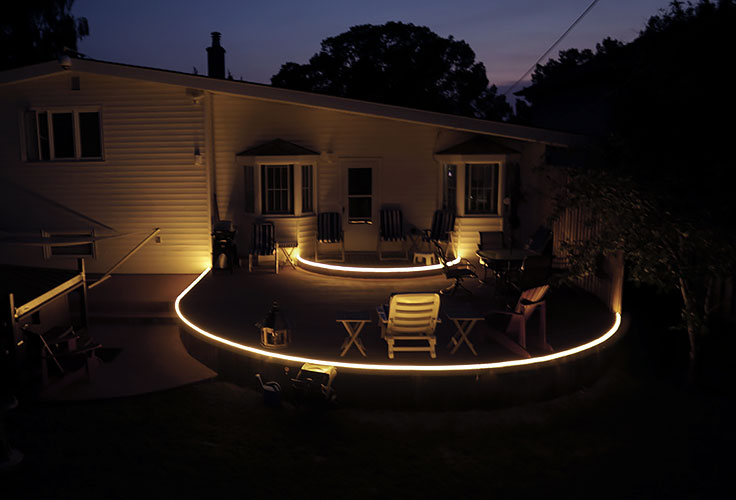
LED light strips are known for their energy efficiency, consuming significantly less electricity compared to traditional lighting options. The exact amount of electricity consumed by LED light strips depends on several factors, including the length and density of the strip, the color temperature and brightness settings, and the usage patterns.
LED light strips are typically measured in watts per foot (or meter). On average, a standard LED light strip consumes around 0.4 to 0.8 watts per foot, which is significantly lower than other lighting alternatives.
Let’s consider a scenario where you have a 16-foot LED light strip installed. If each foot of the strip consumes approximately 0.5 watts, the total power consumption would be 8 watts (0.5 watts/foot × 16 feet = 8 watts). This minimal power requirement makes LED light strips an energy-efficient lighting solution.
Also read: Do LED Strip Lights Get Hot?
Incorporating LED strip lights into your home can lead to substantial savings on your electric bill. By using energy-efficient bulbs like LED lights, you not only reduce excessive electricity usage but also contribute to lowering your overall energy bills, making them a smart choice for financial and environmental reasons.
Comparison of LED Light Strips with Traditional Lighting Options
When it comes to energy consumption, LED light strips to outshine traditional lighting options by a significant margin. Let’s compare LED light strips with two commonly used traditional lighting options: incandescent bulbs and fluorescent tubes.
LED strip lights provide significant advantages over their incandescent counterparts and fluorescent tubes in terms of energy efficiency and cost savings. As a result, many homeowners are opting for these versatile LEDs as they utilize less electrical energy, helping to maintain a lower electric bill throughout the year.
Understanding Incandescent Bulbs: A Comparison of Electricity Usage with LED Light Strips
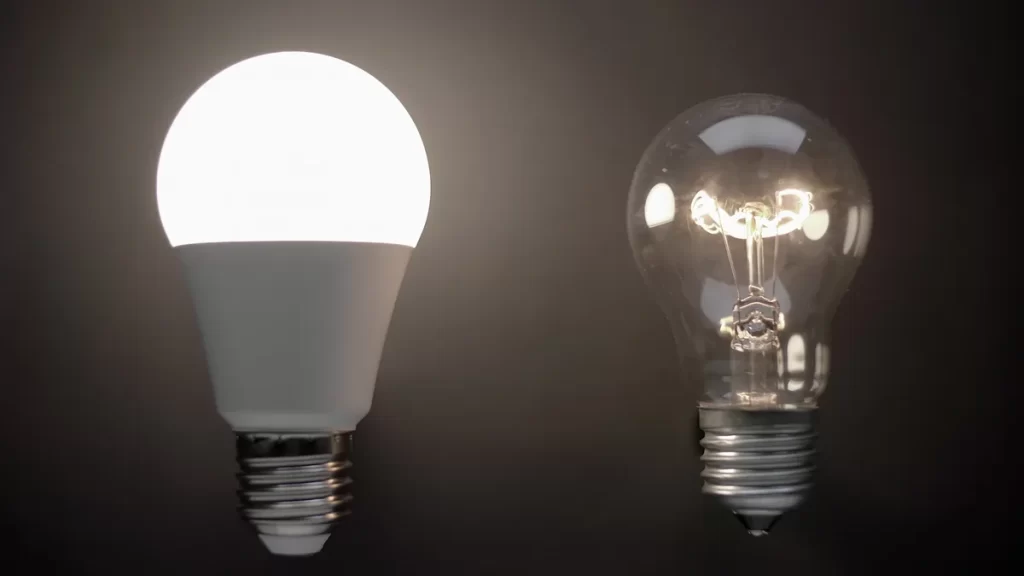
Incandescent bulbs are the traditional, but highly inefficient, lighting choice. These bulbs operate by passing electricity through a filament, which produces light but also generates a considerable amount of heat. As a result, a significant portion of the energy consumed by incandescent bulbs is wasted as heat rather than light.
In fact, approximately 90% of the energy consumed by incandescent bulbs is converted into heat, making them highly inefficient.
In terms of energy consumption, incandescent bulbs typically range from 40 to 100 watts per bulb, depending on the brightness level. Compared to LED light strips, which consume around 0.4 to 0.8 watts per foot, the difference is staggering. By switching to LED light strips, you can experience significant energy savings and lower electricity bills.
Switching from traditional incandescent light bulbs to energy-efficient LED bulbs can drastically reduce your overall electric bills. Not only do LED light strips offer a significant reduction in watt-hours usage, but they also enable households to enjoy brighter lighting during daylight hours while maintaining lower heating costs, making them an incredibly cost-effective solution for modern lighting needs.
Fluorescent Tubes: Examining Electricity Usage in LED Light Strips

Fluorescent tubes have been a popular lighting choice for large spaces such as offices, warehouses, and garages. While more energy-efficient than incandescent bulbs, they still fall short when compared to LED light strips.
Fluorescent tubes work by exciting mercury vapor to produce ultraviolet light, which is then converted into visible light by a phosphor coating inside the tube. However, this process requires a significant amount of electricity.
Fluorescent tubes generally consume around 14 to 32 watts per foot, depending on the type and size of the tube. Compared to LED light strips, fluorescent tubes use several times more electricity to achieve a similar level of brightness. Additionally, fluorescent tubes have a warm-up time, flicker, and contain mercury, making them less environmentally friendly than LED light strips.
Also read: Do LED Light Strips Damage Walls?
Fluorescent tubes, while useful for larger areas, do not match the advantages of LED lighting systems. In contrast, LED strip lights not only provide significant light output but also come with lower wattage requirements, ultimately helping homeowners avoid hefty electricity bills. Investing in energy-efficient bulbs like LED strips can revolutionize your home’s lighting efficiency and comfort.
Evaluating Electricity Usage: Do Connected Strip Lights Use More Electricity?
Connected strip lights, also known as smart LED strip lights, offer enhanced functionality and control options through connectivity with various devices like smartphones, voice assistants, or smart home systems.
Connected strip lights have additional features and capabilities that allow for customized control, such as adjusting brightness, changing colors, and setting schedules or automation. These added functionalities rely on built-in electronics and wireless connectivity, which may lead to slightly higher power consumption when compared to basic LED strip lights.
However, the difference in electricity usage is generally minimal and should not cause a significant increase in energy consumption.
To mitigate any potential increase in electricity usage, many connected strip lights come equipped with energy-saving features. These features can include power management options such as timers, motion sensors, or brightness adjustment settings.
Connected strip lights, or smart LED strip lights, represent a modern solution that integrates seamlessly with contemporary lighting systems. With the ability to adjust settings like brightness through dimmer switches, these lights not only enhance user experience but confirm that LED strip lights are a great way to save money on electric bills by improving energy efficiency. Utilizing energy efficient bulbs or LED strips can lead to significant electricity savings, acting as a viable alternative to traditional lighting solutions such as CFL bulbs or 60-watt incandescent bulbs. By incorporating energy-saving features and the right brightness level, homeowners can achieve a stunning visual ambiance without compromising energy consumption.
LED Strip Lights: Are They Worth the Electricity Costs?
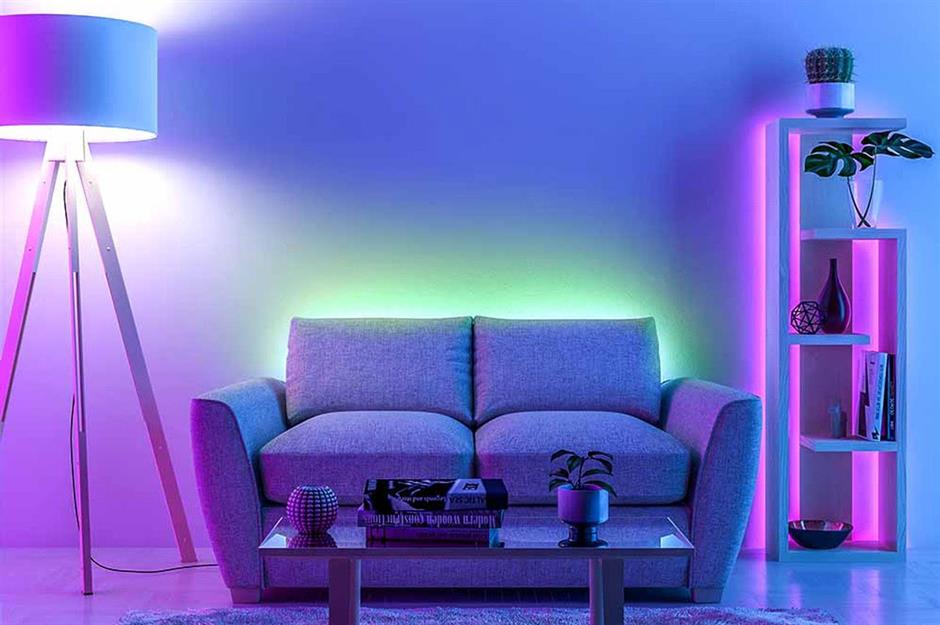
LED strip lights offer numerous advantages that make them highly worth considering for various applications. Let’s explore why LED strip lights are worth it:
- LED strip lights are renowned for their energy efficiency. They consume significantly less electricity compared to traditional lighting options like incandescent bulbs or fluorescent tubes.
- LED strip lights have an impressively long lifespan, often lasting up to 50,000 hours or more. This means less frequent replacement and maintenance, saving you both time and money in the long run.
- LED strip lights come in a range of colors, color temperatures, and brightness levels, allowing you to create the desired ambiance for any space. They are also flexible and can be easily cut or extended to fit specific lengths and shapes, providing endless possibilities for creative lighting designs and installations.
- LED strip lights operate at low voltages, making them safer to handle and reducing the risk of electrical accidents. They generate very little heat compared to traditional lighting options, minimizing the potential for burns or fire hazards
- With advancements in technology, LED strip lights now offer various control options. You can choose from basic on/off switches to advanced controls like remote controls, mobile apps, or integration with smart home systems.
You may also like: How To Clean LED Light Strips Quickly & Effectively
LED strip lights represent a remarkable fusion of efficiency and functionality, making them an exceptional alternative to classic light fixtures. By opting for energy-efficient bulbs like LED strips, you can enjoy the benefits of reduced electricity consumption, resulting in significant savings on your electric bills while striking a balance between visual appeal and reduced impact on the environment.
Closing Thoughts on LED Light Strips: Are They Worth the Investment?
In conclusion, LED strip lights are renowned for their energy efficiency, making them a popular choice for both residential and commercial lighting applications. Compared to traditional incandescent or halogen lighting, LED strips consume significantly less electricity, which translates into lower energy costs and a reduced environmental impact. Typically, LED strips require only a fraction of the wattage of conventional bulbs to produce the same or even greater light output. This efficiency is due to the nature of LED technology, which converts a larger portion of energy into light rather than heat, the latter being a common inefficiency in traditional light sources.
Moreover, the cost-effectiveness of LED strip lights extends beyond just their low power consumption. Their long lifespan means that they need to be replaced less frequently than traditional bulbs, further reducing the long-term costs associated with their use. Additionally, the flexibility and low operational temperature of LED strip lights open up a myriad of decorative and functional applications that might be impractical with more heat-intensive or rigid lighting solutions. From under-cabinet lighting in kitchens to ambient lighting in commercial spaces, LED strips offer a versatile solution that meets a wide range of lighting needs without imposing a heavy electricity usage. For anyone looking to enhance their lighting while maintaining energy efficiency, LED strip lights present a compelling option that balances performance with sustainability.
Do LED Strip Lights Use A Lot Of Electricity | Factors Influencing Electricity Consumption of LED Strip Lights
The question of whether LED strip lights use a lot of electricity often comes down to several key factors influencing their consumption. Length and wattage play critical roles; longer strips with higher wattage can draw more electric current. However, LED strip lights are inherently energy efficient, especially when compared to traditional lighting solutions like a 60-watt incandescent bulb or CFL bulbs. The voltage rating of the LEDs affects their power use as well. Installing dimmer switches can further optimize energy consumption, allowing users to achieve the right brightness level without excess energy waste. In scenarios where multiple strips are connected, such as using a power strip or with cob lights, attention to the overall system’s voltage and amperage is crucial. Weighing these factors can clarify whether LED strip lights are a great way to save money on electric bills while effectively providing illumination, thus answering the question: do LED strip lights use a lot of electricity?
Do LED Strip Lights Use a Lot of Electricity | Length and Wattage of LED Strip Lights
The electricity consumption of LED strip lights largely depends on their length and wattage. Standard density power variations can range significantly, causing differences in energy usage. The total wattage is determined by the number of individual LEDs within the strip. For instance, a typical LED strip may use 90-120 watt-hours when fully lit throughout the night. Many consumers wonder, “Do LED Strip Lights Use a Lot of Electricity?” The answer often depends on how many strips are installed and whether the right bulb is chosen for the intended brightness.
Using higher voltage LED strips can also influence energy efficiency. Energy-efficient bulbs, like LED strips, utilize electroluminescence to produce light while consuming less power compared to conventional lighting. To manage energy usage more effectively, it’s advisable to install dimmer switches. This allows for adjusting the impact brightness based on needs while reducing overall electricity consumption. Understanding the length and wattage of LED strips can help users determine if they fit their electricity budget when asking, “Do LED Strip Lights Use a Lot of Electricity?”
Dimmer Switches and Their Impact on Power Usage
Using dimmer switches with LED strip lights can significantly affect their overall power consumption. While LED strip lights are known for being energy-efficient bulbs, incorporating dimmers allows users to adjust brightness levels. This flexibility can lead to reduced electricity usage during times when full brightness is unnecessary. As a result, many homeowners wonder, do LED strip lights use a lot of electricity? The answer often shifts toward lower consumption when dimmers are applied.
Dimmers also enhance the lifespan of LED strips by reducing the voltage supplied to the lights. By lowering operational intensity, dimmers can prevent excessive heat buildup, which is a common issue with standard hitlights. This efficient use of power not only conserves energy but can also lower utility bills. Ultimately, understanding how dimmer switches impact power usage is crucial for those wanting to maximize the benefits of LED lighting solutions while considering do LED strip lights use a lot of electricity.
Benefits of Using LED Strip Lights
LED strip lights stand out as a popular choice for homeowners and decorators alike, primarily due to their favorable energy profile. Many consumers often wonder, “Do LED strip lights use a lot of electricity?” The answer tends to be reassuring, as these flexible lighting solutions are generally more energy efficient than traditional incandescent bulbs. Comparing their consumption to energy efficient bulbs, it’s clear that LED strips can illuminate spaces without significantly impacting electricity bills. With their lower wattage and innovative technology, they serve as an attractive option for those looking to enhance aesthetics while being mindful of energy costs.
Energy Efficiency Compared to Other Lighting Solutions
LED strip lights are designed to be highly energy-efficient, often consuming significantly less power than traditional incandescent or fluorescent lighting options. The question, “Do LED Strip Lights Use a Lot of Electricity?” can generally be answered with a resounding no. Most LED strips operate on low wattage, allowing users to enjoy vibrant lighting without incurring high electricity bills. Their energy efficiency is primarily due to the advanced technology behind LEDs, which converts a greater percentage of energy into light rather than heat.
Comparing LED strips to other lighting solutions reveals that they can be up to 80% more efficient than incandescent bulbs. This efficiency translates into a lower environmental impact and reduced energy consumption over time. With the ability to produce the same amount of light while using less electricity, it’s clear why many consumers are shifting towards LED strips. Understanding the question, “Do LED Strip Lights Use a Lot of Electricity?” highlights their benefits, making them an attractive option for eco-conscious individuals.
Longevity and Maintenance Costs
LED strip lights stand out not only for their aesthetic appeal but also for their impressive longevity. Typically designed to last up to 50,000 hours, these lights significantly outlast traditional incandescent or fluorescent options. This extended lifespan directly translates to lower maintenance costs. Users spend less time and money replacing burnt-out bulbs, which often leads to concerns about whether LED strip lights use a lot of electricity. With reduced frequency of replacement, the overall cost of ownership decreases.
Maintenance costs are further diminished by the energy-efficient nature of LED technology. While many may wonder, “Do LED Strip Lights Use a Lot of Electricity,” the reality is they consume less energy compared to other lighting solutions. Consequently, households can save on their energy bills while also reducing waste associated with frequent bulb replacements. This combination of durability and energy efficiency makes LED strips a financially savvy lighting option.
Practical Applications of LED Strip Lights
LED strip lights have gained popularity for a variety of practical applications, seamlessly blending functionality with aesthetic appeal. Homeowners often wonder, “Do LED strip lights use a lot of electricity?” This concern is mitigated by the efficiency of LED technology. With low wattage consumption, LED strips provide brilliant illumination without significantly impacting energy bills. Their versatility allows for use in diverse settings, from accent lighting in living spaces to task lighting in kitchens. Exploring different lengths and brightness options ensures that these lighting solutions suit individual needs while keeping electricity consumption in check. The query, “Do LED strip lights use a lot of electricity?” often leads to a deeper appreciation of their energy-saving potential, reinforcing their practicality in modern lighting designs.
Home Decor Ideas Utilizing LED Strip Lights
LED strip lights have become a popular choice for enhancing interior spaces with vibrant colors and warm ambiance. They can be easily installed along walls, ceilings, or furniture to create stunning visual effects. Many homeowners wonder, “Do LED strip lights use a lot of electricity?” Fortunately, these lights are known for their energy efficiency, allowing you to transform your home decor without significantly affecting your electricity bill. Using LED strips in living rooms or bedrooms can highlight artwork or architectural features, offering a modern touch.
Kitchens and bathrooms benefit greatly from the versatility of LED strips. Placing them under cabinets or around mirrors provides functional task lighting while adding style. With minimal heat generation, they are safe to use in various settings. The concern over electricity usage is often addressed with the energy-saving characteristics of LEDs. Homeowners can enjoy creative lighting designs and mood settings by utilizing different colors and intensities, all while minimizing energy consumption.
Outdoor Applications and Energy Considerations
LED strip lights have gained popularity for outdoor applications, thanks to their versatility and energy efficiency. Many homeowners wonder, “Do LED Strip Lights Use a Lot of Electricity?” The answer typically leans towards no, especially when compared to traditional lighting solutions. With their low wattage and ability to produce bright illumination, LED strips provide an excellent choice for illuminating patios, gardens, and exterior features without driving up electricity bills.
Consideration of energy requirements is crucial for outdoor installations. While the question remains, “Do LED Strip Lights Use a Lot of Electricity,” the actual consumption depends on factors like the length of the strip and the specific wattage of the installed LEDs. Properly sized LED strips can enhance outdoor aesthetics without excessive energy costs, making them an ideal choice for both residential and commercial settings.
Tips for Reducing Electricity Usage with LED Strip Lights
Reducing electricity consumption is a key consideration for those wondering, “Do LED Strip Lights Use a Lot of Electricity?” By opting for smart technology and automation, users can significantly lower their energy use. Smart sensors and timers allow for precise control over when and how long the LED strips are on, minimizing wasted energy. Moreover, selecting energy-efficient power supplies and compatible accessories can enhance performance while reducing overall power demand. As a result, careful attention to these factors can ensure that the answer to “Do LED Strip Lights Use a Lot of Electricity” remains a positive one, keeping energy costs in check while enjoying the vibrant benefits of LED lighting.
Smart Technology and Automation
Integrating smart technology into the use of LED strip lights can significantly optimize their electricity consumption. Many smart systems offer features that allow users to control the brightness and schedule when the lights turn on or off. By managing these settings effectively, users can answer the question, “Do LED Strip Lights Use a Lot of Electricity?” with a definitive no, as automated adjustments can lower energy use during peak times or when the lights are not needed.
Automated systems can include motion sensors and timers that ensure LED strips only operate in occupied areas. These features not only enhance convenience but also ensure that energy is used efficiently. Understanding how to maximize your LED strips’ capabilities through smart technology allows homeowners to significantly decrease their overall electricity bill while enjoying well-illuminated spaces.
Choosing the Right Power Supply and Accessories
Selecting the appropriate power supply for LED strip lights is crucial for optimal performance and efficiency. An inadequate power supply can lead to overloading, resulting in the question, “Do LED Strip Lights Use a Lot of Electricity?” being answered in the affirmative due to decreased efficiency. Understanding the wattage requirements of your LED strips ensures they operate safely without excessive energy consumption.
Incorporating the right accessories can also significantly influence energy usage. Quality connectors and controllers maintain a steady flow of power, minimizing unnecessary waste. If you select compatible components, you can alleviate concerns about energy efficiency while enhancing the overall functionality of your lighting setup. This careful consideration ultimately addresses whether LED strip lights contribute to higher electricity bills.

